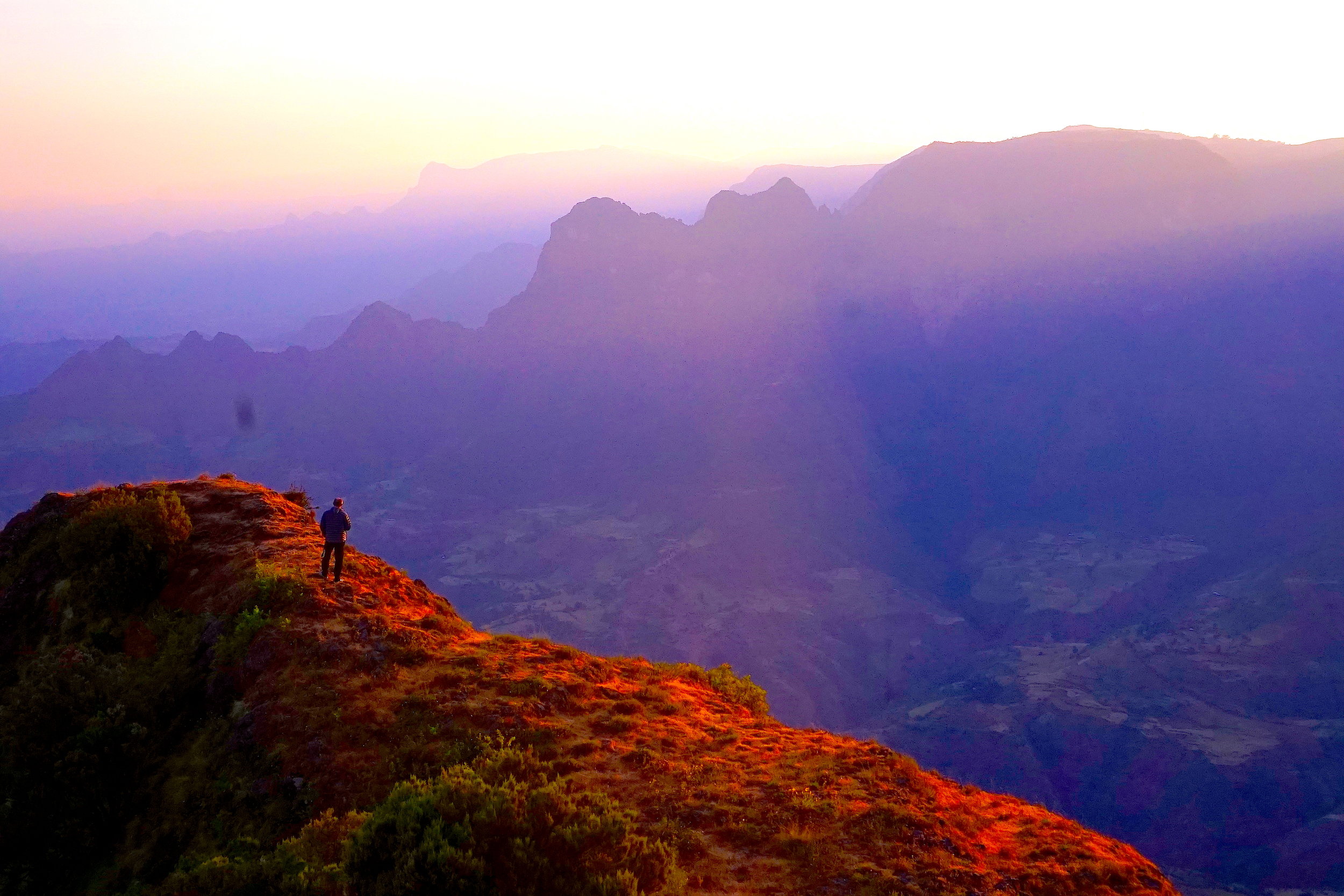
Bale Mountain Forest
530, 000 acres make up the National Park at the Bale Mountain Forest. Here exists the greatest amount of indigenous organisms in a defined region in the world. This includes several rare amphibians, primates, bovids, hares, and rodents. It makes up 26% of Ethiopias endemic species.
Located in southeastern Ethiopia, 400 km southeast of Addis Ababa, the Bale Mountains are a geological enigma. During the last ice age, the mountains were one of the most extensively glaciated areas in present day Ethiopia. The result is striations on shallow hillsides on the Sanetti plateau, massive boulder grooves, till ridges and enormous glacial valleys.
Not only is the area dramatic to travel through, it is also extremely important to the local and surrounding regions as places like Kenya, Somalia, and much of Ethiopia are dependent on the rain that falls here. In its lower areas the Bale Mountains produce 600- 1000 mm of annual rainfall, with up to 1400 mm in the higher areas. There are 40 rivers in the National Park, which are the source of many lowland springs-the only source of water for a vast number of people year round. Night frosts are common and depending on the area in the mountains, temperatures can vary between 10 and 25 degrees.
Deforestation, overgrazing of pastures, and irrigation, have in recent years created an imbalance in the region. This results in a loss of perennial water in the lowlands which is causing great trouble in communities today.
What to See
The Bale Mountains boast 5 different habitats throughout the park including the Northern Grasslands (Gaysay Valley), Northern Woodlands (Park Headquarters), Afro-Alpine Meadows (Sanetti Plateau), Erica Moorlands, and the Harenna Forest.
Along your excursion in the park, there a few must sees throughout. These include the Harenna Forest, the Sanetti Plateau, Mount Tullu Demtu. Visitors can birdwatch, fish, and visit the Gasuray Gorge. They can visit the park headquarters and inquire about the wildforest coffee village, or set up a time to harvest honey with the Oromo people- the largest single ethnic group in the horn of Africa. Forest trails leading to mountain peaks or through the Harenna bamboo forest and waterfall trail are some major highlights in this area.
The Sanetti Plateau, located in the Afro-Alpine Moorlands is the largest continuous area of it’s altitude on the African continent. With lichen covered rocks, giant lobelia, and vast alpine lakes and streams, hiking to the plateau is an experience not to be missed. The area is also the home to half the entire population of the endemic Ethiopian Wolf; there are only 400 left in the world.
The Harenna Forest takes up nearly half the entire park and looks to be something out of a movie set. With trees draped in moss and lichen, the thick greenery seem to almost drip off the branches as visitors walk through a forest that feels alive. Often cloaked in fog, the area adds a hint of mysticism and wonder as visitors hope to catch glimpses of the great amount of elusive wildlife that call the forest their home.
Towering at 4,377 metres Mount Tullu Demtu is the second highest point in all of Ethiopia. Due to the unique location, the road up the mountain passes through extremely remote areas following treacherous roads. The ride starts at an elevation of 2,600 metres in the town of Goba and is relatively easy going at first. Once you pass through the entrance to the national park and start making your way up to the Sanetti Plateau and eventually Mount Demtu’s peak, the road becomes increasingly steep and narrow, but it is well worth the effort.
Getting Around
A popular time to visit the Bale Mountain National Park is from November through to April as the weather, though still slightly unpredictable, is generally more mild.
Visitors can take private or public transportation from Addis Ababa and may spend the entire day venturing through the park by car. Alternatively, visitors may trek on horseback or by foot entirely on their own or by booking anywhere from one to twelve night treks that go through all the varied ecosystems and areas in the park.
Once in the park, visitors can stay in wilderness campsites set up on their own or through a tour. The Dinsho Lodge or Bale Mountain Lodge are excellent alternatives if you’re looking for a less rugged experience.



